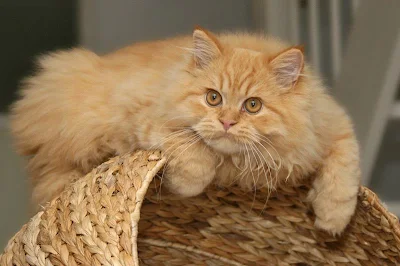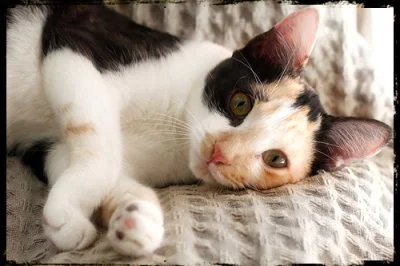Photo by The Wiseguy - see base of post.
What do you do or should you do when you run over a cat or a dog? This sounds awful but it is a reality, it does happen quite frequently and it does pose some dilemmas.
It goes without saying that we must stop and try and help. This can be difficult in itself. Some time ago I saw a squirrel in the road that had been very recently hit and was in the middle of the road alive and struggling. I couldn't just drive around this animal as cars behind would eventually drive over it so I stopped in the middle of the road to stop cars behind driving over the squirrel.
The next problem is dealing with a badly injured animal of any kind. This can be difficult on a number of levels particularly if you are the kind of person who will stop and help (i.e. a concerned person and/or animal lover). Anyway, I braced myself and using a newspaper I had bought I scooped up the squirrel and placed it in the bushes beside the road to either recover or die. That's it. Not much. The whole thing was slightly traumatic and I walked past the spot some time later but no squirrel.
So, the first problem is, can we deal with the gore, the blood, an animal in pain and difficult to deal with? The cat or dog maybe aggressive because of the pain or may run off. Do you chase the animal and check? Lets say you run over a cat or dog, you stop and the cat is lying there badly injured. What do we do? Are we safe to stop in this road? Will cars behind allow you to walk into the road if the cat is in the middle of the road? This can be a dangerous procedure. Also, how do we know which home he/she comes from (see below)? I guess we check if the cat is still alive. Can we be sure that we can check this properly. No not really.
He died on the road, hit by a car. This video is in memory. The YouTube video maker is Camo4x4s
So, we need to find a vet. Where is the nearest vet? Will they see you immediately? The cat is bleeding, where do you put the cat in the car? Are you one of those people who have im
 maculate cars all the time? Is this more important than helping a cat that is bleeding? To some it might be surprisingly. Many people wouldn't even stop.
maculate cars all the time? Is this more important than helping a cat that is bleeding? To some it might be surprisingly. Many people wouldn't even stop.So, we can't find the home and we find a vet, which has taken about 30 minutes. We get to the vet and get seen. The cat can be helped, she has a broken leg and is in shock and bruised but will recover. You stay while the vet does his work or do you go at that point? I guess not.
Now what? Maybe the veterinarian will know the answer. If you don't know where the home is the only thing to do it seems is to take the cat to a local cat shelter or home to your place. Where is the local cat shelter? Probably miles away. Maybe vets have procedures at this point.
I wouldn't be surprised if a veterinarian simply said it was best to euthanize the cat even though she could be saved. Or even if you could get her to a shelter what would they do? They are often overrun with stray cats it seems. Would they take care of an injured cat requiring expensive follow up medical treatment? I doubt it; she's probably end up being euthanized or am I talking nonsense?
The key is to be able to find the person who keeps the cat for them to take over but that could be all but impossible. I think what I would do first is this. Find the nearest house/flat/apartment and find someone to talk to (this may not be possible). Eventually you might and probably will meet someone who knows who keeps the cat in question. From that starting point we have help.
These are the moral and practical issue but what about the law? I read that in the UK (and USA?) that is we run over a cat or dog, in the case of a dog we are obliged to report the accident to the police. If not it may be a criminal offense. But the same is not the case for a cat. Is this true? Can this be correct? If so it seems bizarre and an anomaly in the law.
Lots of questions then, that have to be answered quickly as no doubt when the accident happened you were going somewhere in a rush. Conclusion: if we run over a cat or dog I think that we should stop, make sure the cat or dog is in a safe place or take the cat with us (if possible), and if possible go to the nearest house or home and ask questions as to who keeps the cat or dog and if that doesn't produce an answer ask about the nearest vets etc. and go from there. The local knowledge will help us through the moment more efficiently (i.e. get help more quickly) in my opinion and therefore help the cat. I think we should reschedule the day to accommodate this as well. It's the only way to do the right thing and do it properly.
Run over a cat or dog - Photos - heading page: kitten living dangerously in Turkey, where according to the photographer, you see cats killed on the roads simply left there to be flattened by traffic. Life is more dangerous for domestic cats and feral cats in places like Turkey. Photo published under a creative commons license = Attribution-NonCommercial-NoDerivs License.
Dead cat: by salmannas creative commons license = Attribution-NonCommercial-NoDerivs License. This cat was left to die I suppose.
Run over a cat or dog to Home page
























